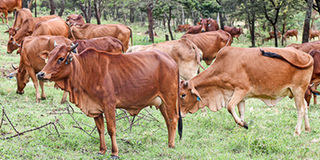Significance of food safety and quality management systems in meat value chain
Sponsored by State Department for Livestock

By Methuselah Nyamwange
Meat has traditionally been viewed as a vehicle for transmission of human food-borne illnesses. This is mainly because meat is a great source of nutrients such as proteins, vitamins, minerals, and fatty acids, and this provides an ideal medium for the growth and proliferation of spoilage and pathogenic microorganisms.
Food safety is a fundamental human right which guarantees that food shall not cause any harm to the consumer when it is prepared and/or consumed according to its intended use.
Meat and meat products are susceptible to contamination due to biological, chemical, physical, radiological, and allergenic agents that find their way via a wide range of exposure points in the food value chain, and ultimately becomes the source of infection to consumers. As a result, it is the need of the hour priority to produce safe, quality and legal food by the establishment through implementation of strict food safety and quality legislations from farm to fork.
During livestock production at the farm, measures should be taken to reduce the chances of introducing risks. All animals should be properly labelled and documentation about health, vaccination, and feeding programmes maintained. Individual animal identification enables traceability so that source of meat can be traced back from the slaughterhouse to the farm location.
Sick animals must also be isolated from the rest of the flock to prevent spread of diseases. Further, the animals intended for slaughter needs to be monitored for proper withdrawal period following treatment with antibiotics to prevent the spread of the drug in the food chain. During the transportation of animals from farm to slaughterhouse, proper precautions should be taken to avoid undue stress and injury to the animals.
At the slaughterhouse, animals should be given proper rest at the lairage so that stress caused during travel can be relieved. Animals shall be maintained in their respective groups and overcrowding and mixing of different species should be strictly avoided. The animals must be in a comfortable condition, as any stress before slaughter would have an adverse effect on the meat quality. The ante-mortem inspection of animals should be carried out by a qualified veterinarian to diagnose any abnormal/ diseased animal.
During slaughtering, all necessary precautions are taken to avoid contamination of meat. The critical control points must be identified, monitored, and controlled to achieve quality and safe meat and meat products.
Post-mortem inspection of carcasses and organs is equally critical to produce safe and hygienic meat, thus condemned carcasses and unsafe material should be handled properly to avoid cross-contamination.
The equipment used for slaughter should be regularly sterilised, and only potable water should be used for washing carcasses. Moreover, carcasses should be chilled as soon as possible to retard microbial proliferation.
Personal hygiene is equally important in ensuring production of safe and quality meat. Slaughterhouse workers should wear clean protective clothing and sanitise hands regularly. Regular health check-ups of employees should be carried out and awareness programmes/trainings should be arranged frequently for employees to educate them regarding the role of personal hygiene in quality control.
At distributor level, a cold chain should be maintained until meat reaches the consumer. It is also necessary to have a traceability mechanism so that if any incidences happen, the product can be recalled.
Consumers can play a very significant role in the prevention of foodborne illness, provided they are aware and conscious about food safety and quality. Consumer awareness could be increased using different mass media tools, training, and education.
To maintain the quality and safety of meat and meat products, different national and international standards are being implemented by slaughterhouses operating in Kenya. One of these standards is Food Safety Systems Certification (FSSC 22000 Version 6), which is a Global Food Safety Initiative (GFSI) benchmarked standard for food safety.
A food safety and quality management system is a collection of interconnected components that work collectively to ensure that food does not pose a risk to human health. It is a tool used for managing and executing a food safety and quality practices in an organisation by conforming to internal and external requirements.
To ensure that food is fit for consumption, a food safety management system strives to carefully identify and eliminate physical, chemical, microbiological, radiological and allergenic contaminants throughout the meat value chain.
____________________
Methuselah Nyamwange is the Quality Assurance and Compliance Manager at Neema Livestock and Slaughtering Investments Limited


